Selected Libation Cups and Works of Art from The H.G. Beasley Collection at Alastair Gibson Auctions, 18 november 2021
The Collection of H. G. Beasley (1881 – 1939)
Harry Geoffrey Beasley was born on the 18th of December 1881 in East Plumstead, Kent, the son of Charles Beasley, a wealthy business man and owner of the North Kent Brewery, Plumstead. The business was a successful Victorian family enterprise, brewing its own beers and bottling imported beers such as Guinness Stout from Dublin. It held two Royal warrants: H.R.H. THE PRINCE OF WALES and H.R.H. THE DUKE OF EDINBURGH and was eventually taken over by Courage in the 1960’s.
Harry, one of two sons, developed an interest in ethnography at an early age. His own collection began at the age of 13 when he bought two Solomon Island clubs and over his lifetime this obsession went on to become an extensive ethnographic collection of approximately 10,000 artefacts from all over the world.
Harry Beasley followed his father and elder brother into the family business, Beasley’s Beers Ltd, and in 1914 married his wife, Irene Marguerite Beasley. That same year he was elected to the Royal Anthropological Institute where he was a member until 1937, serving as vice-president between 1932 – 1937.
In 1928 Beasley and his wife moved to Cranmore Place in Chislehurst, Kent and there set up the Cranmore Ethnographical Museum which eventually held more than 6,000 objects of ethnographical interest. The Beasley’s collected artefacts from across the world including the Pacific, Asia, Africa, North West America and Europe from dealers, missionaries and from various museums. Beasley wrote numerous articles for anthropological journals and was considered a gifted amateur within this field. This was the golden age of collecting between the two World Wars, when London was awash with dealers, collectors and civil servants returning from service with the British Empire, and retiring to the motherland, bringing with them a diverse wealth of objects from all over the globe.
Harry Beasley died from diabetes on the 24th of February 1939, at the age of 58, and following his death his collection was moved to various British Museums for safe keeping during the War. The Cranmore Museum and Beasley’s family home was damaged by bombing in November 1940 and after the war substantial portions of the collection were donated to The British Museum, The Pitt-Rivers Museum, Oxford, The Museum of Archaeology and Anthropology, University of Cambridge, The Royal Museum Edinburgh and The Merseyside County Museum. The remainder of the collection was retained by his wife.
It arguably laid the foundation of the British Museums collections of Pacific combs and fish-hooks following the generous donations made by the Beasley family following his death, and the conclusion of the Second World War.
The following fifteen lots were retained by his widow, Irene, and have been passed down the family to the present owners, who feel it is time to allow a new generation of collectors to enjoy these idiosyncratic works of art.
Bibliography: Becoming ‘Professional’: From the Beasley Collection to the Cranmore Ethnographical Museum, by Lucie Carreau, Journal of Museum Ethnography, no.23 (2010), pp. 41-55.
Lot 1. A rare Chinese rhinoceros horn libation ‘ear’ cup, Qing dynasty, 17th-18th century, cyclically dated to the Guiwei year corresponding to AD 1643 or 1703. Height: 5cm Length: 13cm Width: 8.5cm Weight: 127g. Estimate £20,000 - £30,000. © Alastair Gibson Auctions
Finely carved after a Western Han Dynasty form jade ‘ear’ cup, ‘Jian Guangzhi’, carved with a three column archaic inscription in bronze script to the base, the translucent horn of rich honey and dark-chocolate brown, emanating around the base. Applied paper label dated 20th June 1930. The inscriptions reads: ‘in the year of the Ram, stone fire, star fire, copy of Han dynasty Jade Jianguang Zhi’.
Note: It is rare to find a dated Rhinoceros horn ear-cup and only six appear to have previously been recorded.
The ‘Jian Guangzhi’ cup (fig.1) is recorded in the Gujin Tushu Jicheng’, known as the Imperial Encyclopedia, written during the reign of the Kangxi and Yongzheng Emperors, begun in 1700 and completed in 1725.
fig.1.
Three signed examples are known by the famous Yangzhou carver, Bao Tiancheng: two from the Angela Chua Collection, both illustrated by T.Fok, Connoisseurship of Rhinoceros Horn Carving in China, Hong Kong, 1999, p.106. no.58 and the third from the Fowler Museum, Los Angeles, was sold at Christie’s London, 7th November 2006, lot 53 for £120,000.
In addition to the three noted above, only two others appear to be published: see T.Fok, ibid., pp.99 and 102, not 51 and 54. The first from the Harvard University Art Museums, dated 16th century, with an inscription which translates as ‘modelled after Han style jades in mid-spring in the cyclical year renshen, with seals Jiyu Gushi; the second dated 17th century, signed You Kan and with a further inscription and another sold at Poly Auction, Beijing, 06/12/2011, lot 520, signed You Kan Gong.
The H.G. Beasley cup adds a seventh to this small and interesting group of archaistic cups, (the only one recorded in bronze script) with their wish to emulate the perceived virtues of antiquity, underscored in the inscription.
Lot 2. A rare Chinese rhinoceros horn ‘lotus form’ libation cup, Qing dynasty, early 18th century. Height: 9cm Length: 16cm Width: 9.5cm Weight: 142g. Estimate £12,000 - £18,000. © Alastair Gibson Auctions
The large lotus leaf form vessel finely carved on a pierced base, with five cranes in flight around the rim, all supported on a delicate stalk forming the base, further lotus flowers, buds and leaves completing the design, another crane perched on a seedpod on the foot rim, the translucent horn of dark chocolate tone.
Lot 3. A rare and large Chinese rhinoceros horn archaistic libation cup, Qing dynasty, Kangxi period (1662–1722). Height:13cm Length: 16cm Width: 11cm Weight: 345g. Estimate £30,000 - £40,000. © Alastair Gibson Auctions
Finely carved with six cavorting chilong dragons forming the handle and around the body set against a further band of sinuous chilongs entwined in low-relief, all above a stiff-leafed band terminating above the foot, the translucent horn of a rich dark reddish/brown tone. Applied collectors paper label ‘H. G. Beasley 15/12/19’.
Lot 4. A large Chinese rhinoceros horn archaistic libation cup, Qing dynasty, 17th-18th century. Height: 9.5cm Length: 17.5cm Width: 10cm Weight: 332g. Estimate £30,000 - £40,000. © Alastair Gibson Auctions
The horn of warm honey tone, carved with a band of two chilong dragons reserved against a band of taotie masks, all beneath a key-fret border, the foot probably reduced.
Lot 5. A fine Chinese rhinoceros horn ‘nine chilong’ dragon libation cup, Qing dynasty, Kangxi period (1662–1722). Height: 9cm Length: 17cm Width: 10cm Weight: 270g. Estimate £30,000 - £40,000. © Alastair Gibson Auctions
The horn of rich dark brown tone, finely carved and pierced with nine Chilong dragons forming the handle over the rim and around the body, above a taotie mask band in low-relief, all within key-fret borders around the rims. Applied collector’s paper label ‘G.3 1-6-1933’.
A similarly fine archaistic cup was sold at Beijing Poly Auctions, 1/8/2010, lot 1549 for RMB 1,400,000.
Lot 6. A rare Chinese rhinoceros horn ‘chilong and lingzhi’ libation cup, Qing dynasty, Kangxi period (1662–1722). Height: 7cm Length: 16cm Width: 9cm Weight: 181g. Estimate £18,000 - £22,000. © Alastair Gibson Auctions
The horn of dark honey tone, carved with two chilong dragons amongst lingzhi fungus and bamboo, a stem of fungus and bamboo forming the handle.
Note: Jan Chapman, The Art of Rhinoceros Horn Carving in China, Christie’s, London, 1999, p165. no.204 illustrates a similar cup with chilong and lingzhi from the Gerard Levy Collection. A similar libation cup was sold at Woolley & Wallis, 1st July 2020, lot 81.
Lot 7. A rare Chinese rhinoceros horn archaistic libation cup, jue, Qing dynasty, 17th-18th century. Height: 12.2 cm Weight: 130g. Estimate £13,000 - £15,000. © Alastair Gibson Auctions
The horn of warm honey tone, carved in the form of an archaic Shang Dynasty bronze three-legged drinking vessel, ‘Jue’, with a pair of chilong dragons around the body holding sprigs of lingzhi in their mouths, applied collectors paper label G.11 1-6-1933.
Note: A similar cup, dated to the Ming Dynasty, is illustrated in The Complete Collection of Treasures of the Palace Museum, Bamboo, Wood, Ivory and Rhinoceros Horn Carvings, page. 138., cat. no. 124.
Another similar is illustrated and discussed by Tom Fok, Connoisseurship of Rhinoceros Horn Carving in China, p.93, cat. no. 46, from the collection of Mr Chun-hung Li.
For a similar example sold see Woolley & Wallis, Fine Chinese Paintings and Works of Art, 21st May 2019, lot 55.
Lot 8. A rare Chinese rhinoceros horn archaistic libation cup, Qing dynasty, 17th century. Height: 11cm Length: 17cm Width: 10cm Weight: 333g. Estimate £30,000 - £40,000. © Alastair Gibson Auctions
Finely carved with four large chilong dragons around a pierced handle, above a taotie mask band around the body, all within key-fret borders, the translucent horn of warm toffee-coloured tone, applied collectors paper label, 17/3/36.
Note: For a similar cup in the Qing Court Collection dated to the late Ming Dynasty, see The Complete Collection of Treasures of the Palace Museum, Bamboo, Wood, Ivory and Rhinoceros Horn Carvings, Beijing, 2001, page 152. cat. no. 134.
Another similar archaistic libation cup was sold at Christie’s New York, 25th March 2010, lot 894.
Lot 9. A small Chinese rhinoceros horn 'cranes and lotus' libation cup, Qing dynasty, 17th-18th century. Height: 5cm Length: 8cm Width: 5cm Weight: 70g. Estimate £6,000 - £9,000. © Alastair Gibson Auctions
Carved with three cranes amongst lotus flowers, leaves and tendrils, the stalk forming the base, the interior of the rim with a small lotus flower, the translucent horn of golden honey tone. Applied collectors paper label 22-10-23.
Note: A bowl dated to the early Ming Dynasty is in the Qing Court Collection, The Complete Collection of Treasures of the Palace Museum, Bamboo, Wood, Ivory and Rhinoceros Horn Carvings, Beijing, 2001, page 122, cat. no. 111.
Lot 10. A rare Chinese rhinoceros horn archaistic libation cup, jue, Qing dynasty, 17th century. Height: 13 cm Length: 13cm Width: 7cm Weight: 191g. Estimate £15,000 - £20,000. © Alastair Gibson Auctions
Finely carved with three chilong dragons, with a pierced taotie mask handle, reserved against a leiwen scroll band, all beneath a key-fret band, all raised on three leaf-shaped feet, the horn darkly patinated. Applied collectors paper label ‘G.S 1-6-1933’.
Note: The present cup is inspired by archaic bronze jue tripod wine vessels from the Shang and Zhou Dynasties. Jue-shaped libations cups from the Qing Court Collection are illustrated in The Complete Collection of Treasures of the Palace Museum, Bamboo, Wood, Ivory and Rhinoceros Horn Carvings, Hong Kong, 2002, p. 154. pl. 136, late Ming Dynasty and p.56, pl.205, middle Qing Dynasty. See also a related jue libation cup, in the Harvard University Art Museums, illustrated by Tom Fok in Connoisseurship of Rhinoceros Horn Carving in China, Hong Kong, 1999, pl.36.
Lot 11. An extremely rare Chinese rhinoceros horn 'billy-goat form' libation cup, Qing dynasty, Early 18th century. Height: 7cm Length: 7cm Width: 4.5cm Weight: 65g. Estimate £30,000 - £50,000. © Alastair Gibson Auctions
The horn of a rich striated walnut tone, finely carved in the form of a recumbent billy-goat or deer-like creature, with finely incised fur to its beard, mane and bushy tail terminating in three cloud-like scrolls, its front claws neatly folded one upon the other, the horns resting on its back, its spine clearly visible.
Note: This extremely rare small cup is one of the finest examples of a small group of libation cups modelled in the form of billy-goat or deer-like creatures, dating to the 17th and 18th centuries. Three examples are illustrated by Jan Chapman, The Art of Rhinoceros Horn Carving in China, London, 1999, p.83-84, cat. no. 56 & 58. The first, from The Water, Pine and Stone Retreat Collection, previously sold at Sotheby’s Hong Kong, 25 November 1987, lot 490, is of particular interest as it bears both a Wanli reign mark and Bao Tiancheng seal mark, which helps date this group. The present example bears a strong resemblance to the cup in the Dr. Ip. Yee Collection, illustrated by Chapman. Two other examples of this group include a cup sold at Sotheby’s New York, 20th November 1973, lot 48 and another cup in the A & J Speelman Collection, sold at Beijing Poly Auction, 5.6.2011, lot 7139. Another similar shaped cup is illustrated on the Palace Museum website, 8.7-9cm., diameter., which is similarly designed as a dual-purpose piece.
Lot 12. A Chinese ivory brush pot, Qing dynasty, 18th-19th century. Height: 13cm Diameter: 9.5cm Weight:658g. Estimate £2,000 - £3,000. © Alastair Gibson Auctions
Of cylindrical waisted form, finely carved with a classical scene of scholars in a landscape, heightened in black. H. G. Beasley collector’s acquisition inscribed in black ink, 1.1.18.
Lot 13. A Chinese ivory brush pot, Qing dynasty, 18th-19th century. Height: 13cm Diameter: 11cm Weight: 724g. Estimate £2,000 - £3,000. © Alastair Gibson Auctions
Finely carved with the Eight horses of Muwang, heightened in black. H. G. Beasley collector’s acquisition inscribed in black ink, 29.10.30.
Lot 14. A small Chinese ivory brush pot, Qing dynasty, 18th-19th century. Height: 9.5cm Diameter: 5.5cm Weight: 175g. Estimate £1,000 - £1,500. © Alastair Gibson Auctions
Finely carved with a female attendant holding a vase, accompanied by a deer, within an island landscape, inscribed with a poem and seals.
Lot 15. A small Chinese ivory brush pot, Qing dynasty, 18th-19th century. Height: 9.5cm Diameter: 5.3cm Weight: 160g. Estimate £1,000 - £1,500. © Alastair Gibson Auctions
Carved with scholars in a landscape beneath a rocky outcrop and pine trees. H. G. Beasley collector’s acquisition inscribed in black ink 23.4.17.
ALASTAIR GIBSON Auctions. Fine Asian Art, London, 18 november 2021

/https%3A%2F%2Fprofilepics.canalblog.com%2Fprofilepics%2F1%2F0%2F100183.jpg)
/https%3A%2F%2Fstorage.canalblog.com%2F03%2F02%2F119589%2F96711876_o.jpg)
/https%3A%2F%2Fstorage.canalblog.com%2F11%2F31%2F119589%2F94773502_o.jpg)
/https%3A%2F%2Fstorage.canalblog.com%2F20%2F83%2F119589%2F94772815_o.jpg)
/https%3A%2F%2Fstorage.canalblog.com%2F26%2F72%2F119589%2F75604929_o.jpg)
/https%3A%2F%2Fstorage.canalblog.com%2F59%2F60%2F119589%2F26458628_o.jpg)



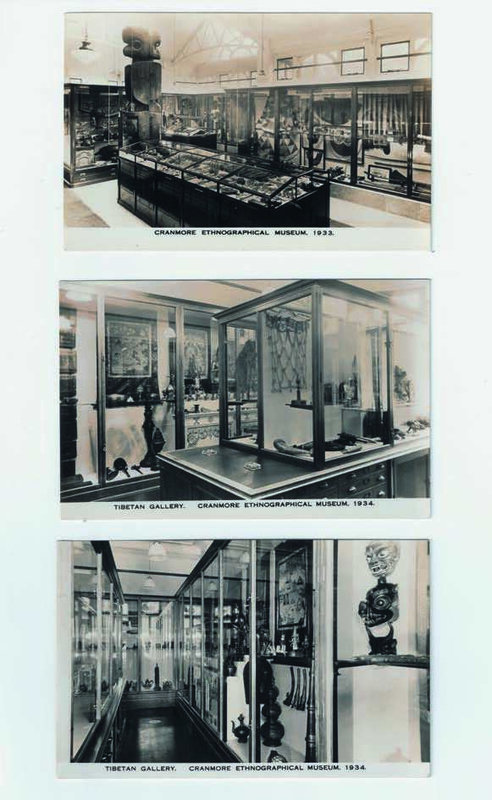
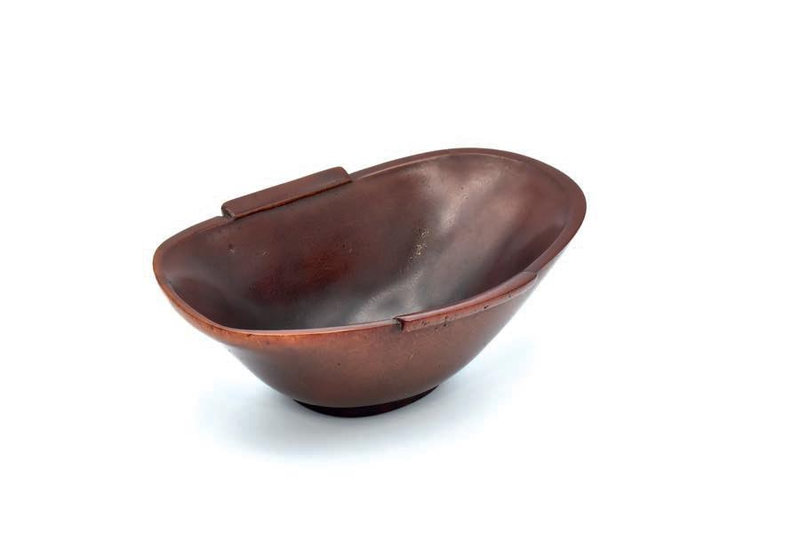

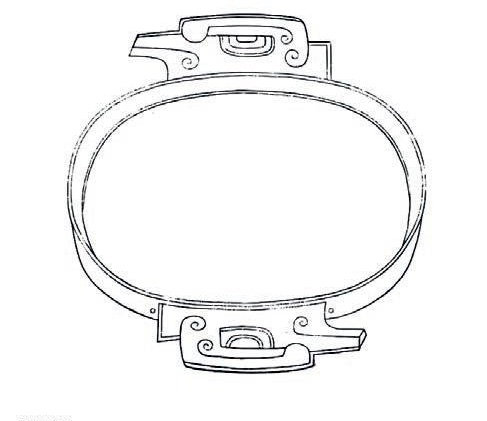

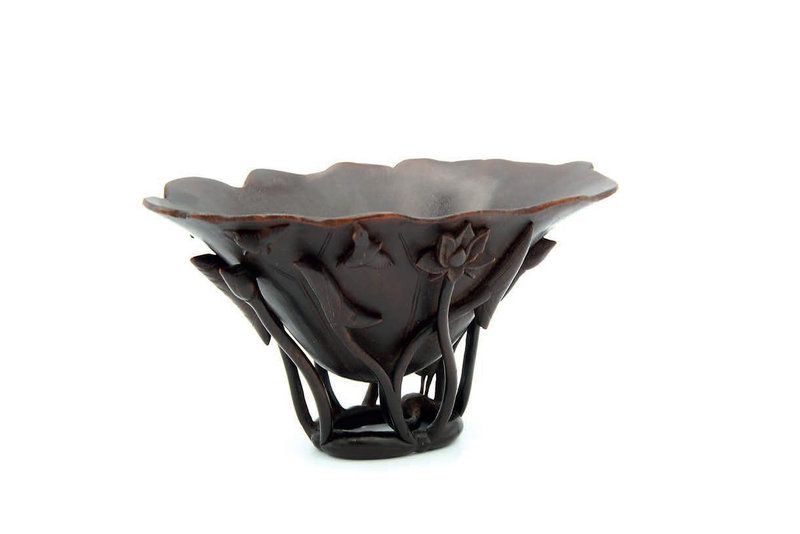



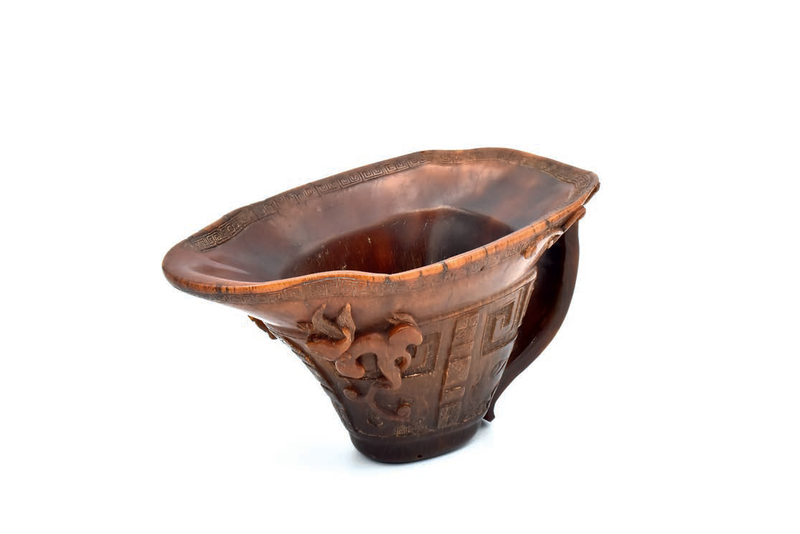
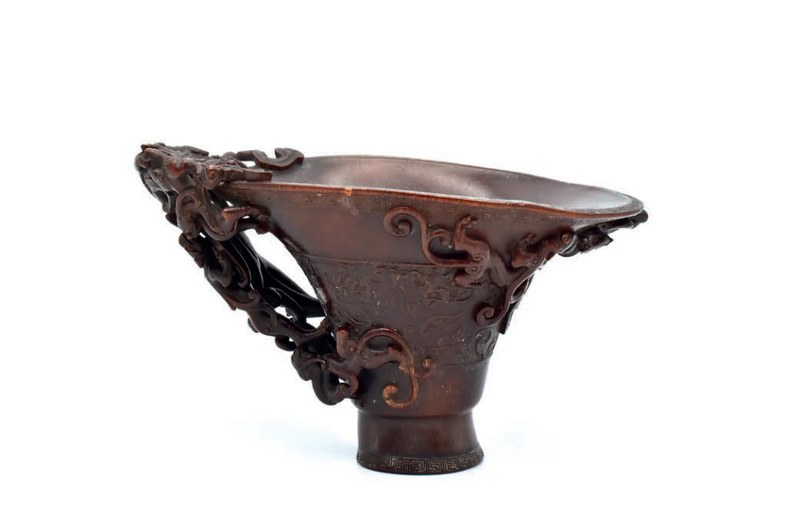

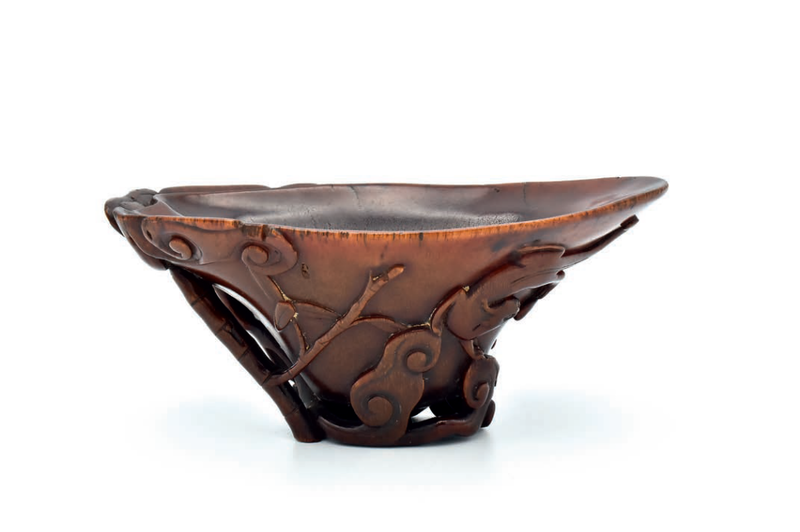
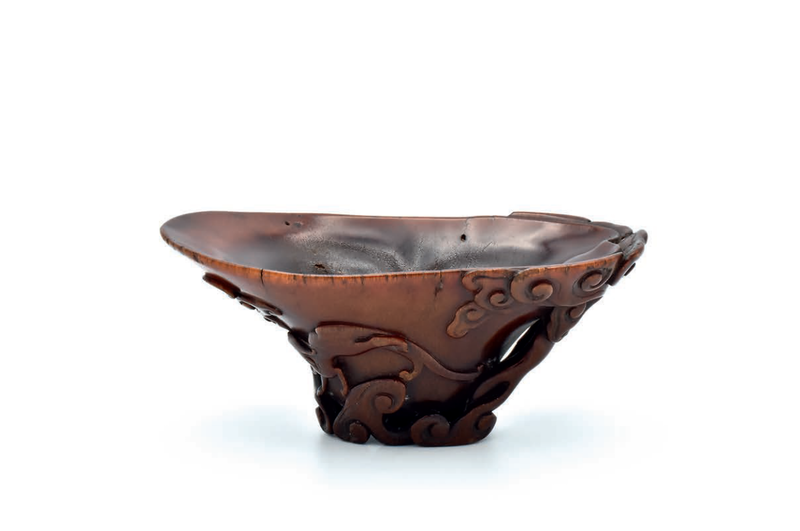
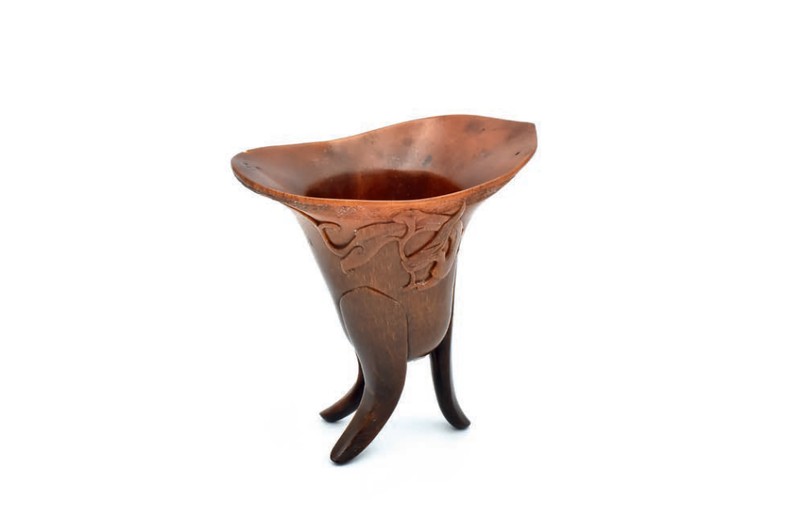

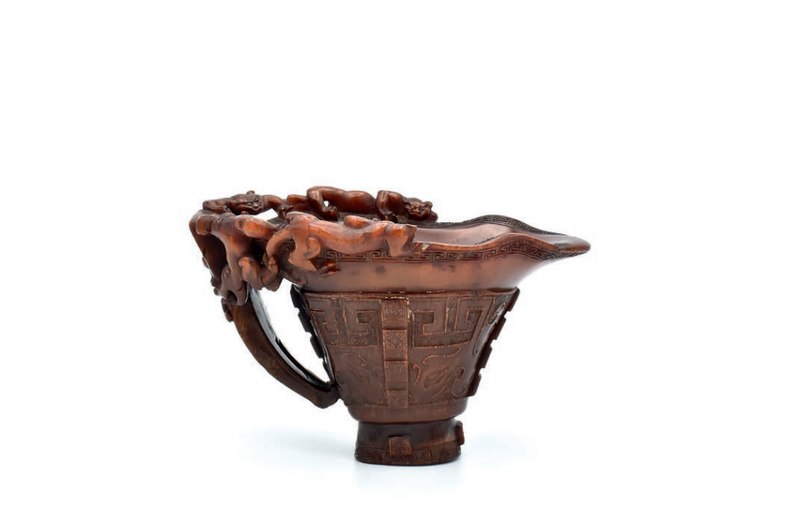

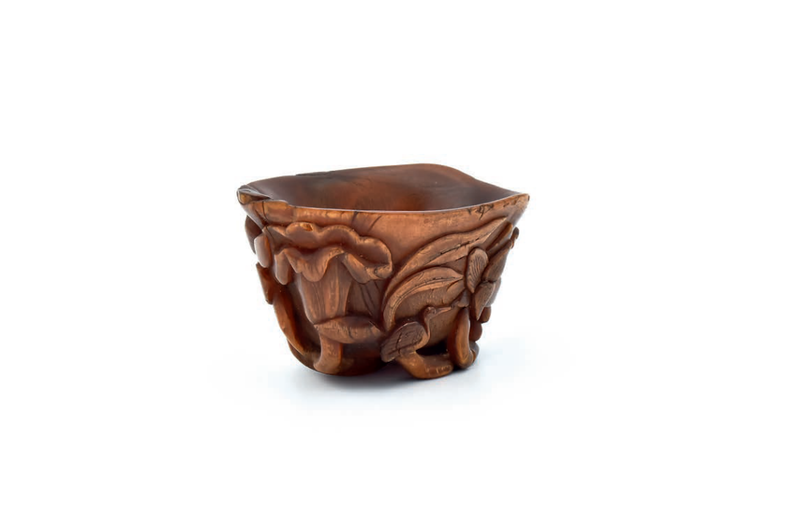

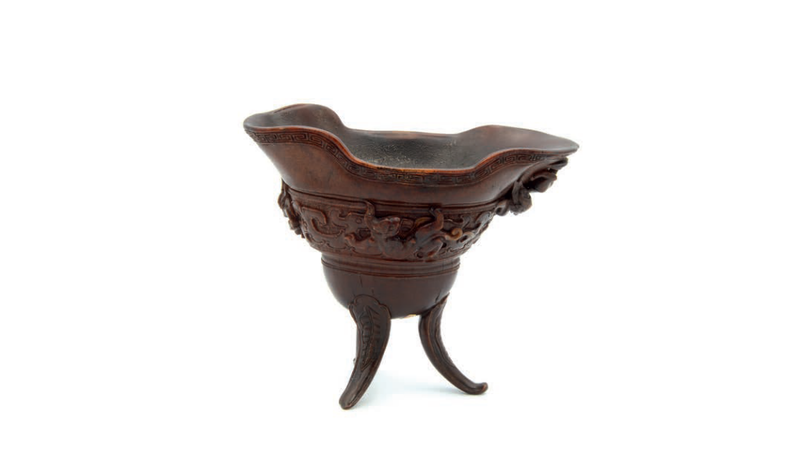
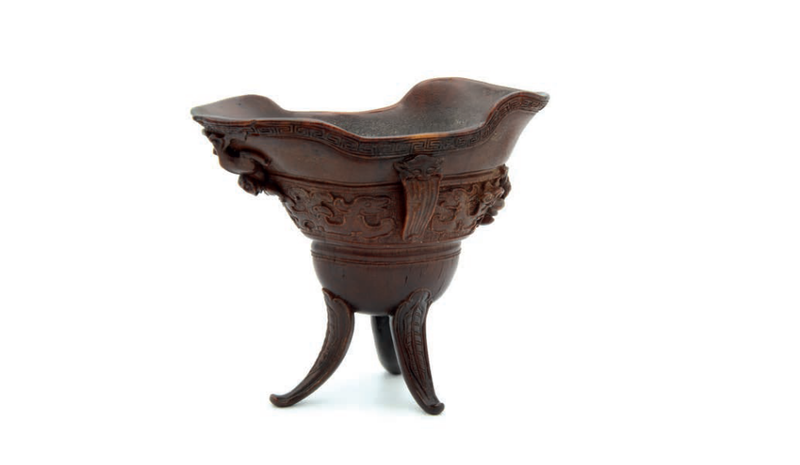
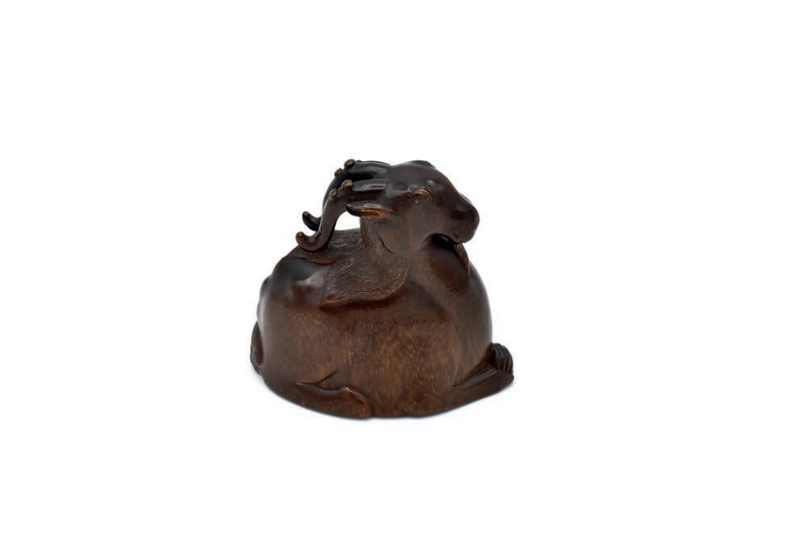




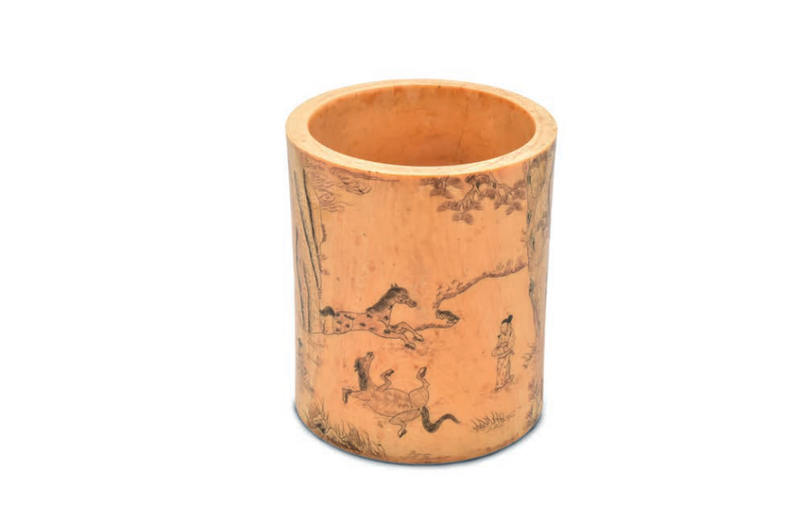




/http%3A%2F%2Fstorage.canalblog.com%2F89%2F85%2F119589%2F129503060_o.jpg)
/http%3A%2F%2Fstorage.canalblog.com%2F68%2F96%2F119589%2F128581141_o.jpg)
/http%3A%2F%2Fstorage.canalblog.com%2F08%2F84%2F119589%2F128581002_o.jpg)
/http%3A%2F%2Fstorage.canalblog.com%2F80%2F61%2F119589%2F128580862_o.jpg)